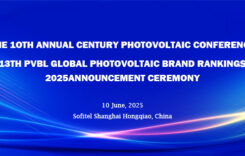Sunrise Global Solar Energy Co. Ltd. (Sunrise) has recently achieved a breakthrough for industrial grade p-type Cz solar cells. A peak efficiency of 19.65% was achieved in pilot production by combining Sunrise’s advanced fabrication techniques and a special plating method. The plating technology is using Light Induced Electroless Plating (LIEP) chemicals developed by MacDermid Photovoltaic Solutions (MacDermid).
Sunrise recently reached peak conversion efficiency of 19.65% in industrial grade 6-inch p-type Czochralski wafer. The cell was the result of a conductor grid electrode formed using a wet-chemical plating technique. The plating utilizes MacDermid’s Light Induced Electroless Plating (LIEP) Ag plating chemical system. MacDermid is a leading global provider for specialty chemicals.
This plating method can be used for both direct plating onto the silicon or plating on a “seed layer”. It is used to achieve narrower silver fingers to increase the current collection surface area of silicon. Contact resistance between silver and silicon can also be improved. Alongside advanced processing steps developed by Sunrise, this leads to increased overall efficiency of the cell.
Internal reliability tests, both at a cell and module level, show comparable performance to standard screen-printed cell. The silver-plated surface also shows superior solderability than typical screen-printed silver and is compatible with various ribbon materials. Sunrise CTO, Dr. Budi Tjahjono commented, “The plating concept has been around in PV for a long time, but there are always some concerns with visual aesthetic, adhesion and reliability of plated cells. After 2 years of development, a stable and consistent plating process to give high-efficiency cells with reliable performance has been actualized by Sunrise. We found out that the MacDermid’s LIEP Ag chemicals are well-suited for the process we are developing. The technology is now ready for mass-production and is under qualification process by several module companies.”
Due to the high purity of the plated silver, lower metal resistance can be achieved while total precious metal consumption can also be reduced. Other plating alternatives, utilizing low-cost, low-resistance metals, are also currently under investigation at Sunrise. Sunrise COO, Ted Szpitalak commented, “Since silver paste is typically one of the highest cost components of the cell fabrication process, its reduction can potentially drive down the cost per watt considerably, making photovoltaic even more cost-competitive and environmentally-friendly. One of Sunrise‘s long term goals is to continue working on high-efficiency technology to create more energy but using less resources both in material consumption and cost.”











